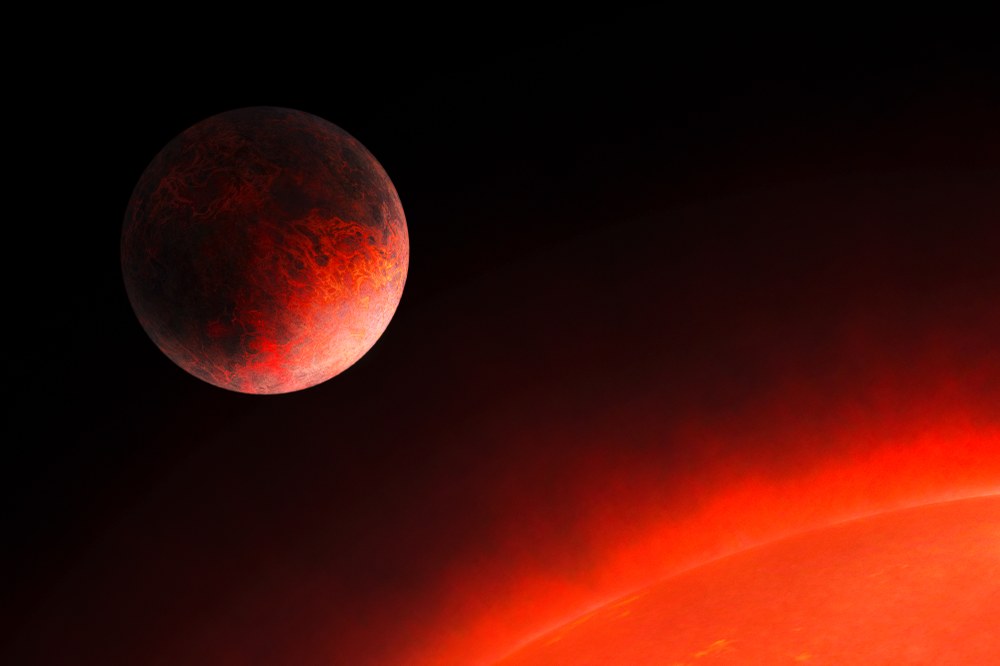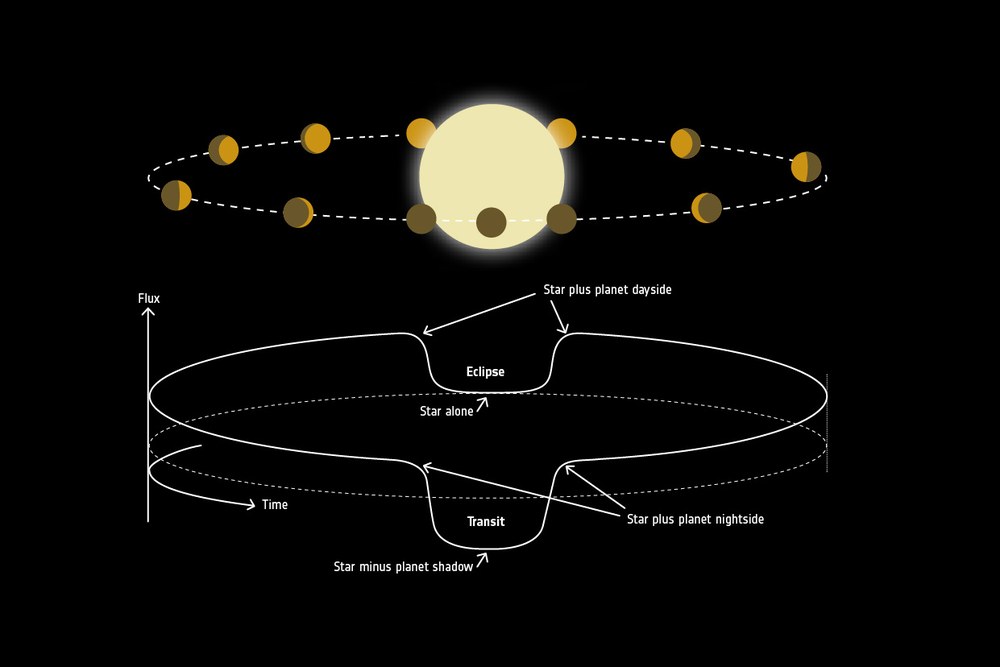GJ 367b - reloaded

In 2021, GJ 367b was discovered, a flyweight among exoplanets, but with a large iron core. Kristine Lam from our department was then the first author of the article in the journal Science. Now GJ 367b is again at the centre of a publication as it has been accepted by ApJL. GJ 367b is a hot, dark planet that has no air envelope and where there is no exchange between warmed and colder regions.
The planetary system was observed over a full orbit with the James Webb Space Telescope. The changes in the light in the mid-infrared (MIR) show a characteristic course over the entire phase.
When the planet is in front of the star, the radiation is at its lowest - this is the transit. If the planet moves out of the transit, the MIR radiation of the entire system increases, because the planet contributes to the total radiation through the reflection on its surface. When the planet disappears behind the star - secondary transit or eclipse - the total MIR radiation of the system decreases again, but not as much as in the primary transit. The exact course and depth of the dip depends on the wavelength and surface of the planet.

